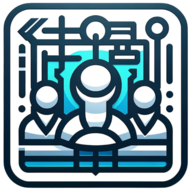What’s a Unique Method You’ve Used to Understand Your Target Audience Better?
We asked Founders and CEOs for their unique methods to better understand target audiences and how it impacted their designs. From linking predictive and emotional analytics to deploying UX principles, here are five insightful responses.
- Link Predictive and Emotional Analytics
- Employ Contextual Inquiry
- Use Customer Journey Mapping
- Add Psychographic Segmentation
- Deploy UX Principles
Link Predictive and Emotional Analytics
One of the more specific methodologies we've used to better understand our audience is linking predictive analytics with emotional analytics to tap into emotional responses and reactions across users that go beyond simply knowing their age or income bracket based on demographic and behavioral data. We look at patterns in emotional responses and reactions to content and interfaces when users interact with various types of content online, like social media, reviews, or customer service communications.
For example, when given a task to redesign the website of an international-travel client, we used this advanced analytics setup to track the way users responded to visual and content-design elements. We observed recurring patterns, for instance, higher positive engagement with interactive maps, and frustration with longer booking processes.
Drawing on these insights, we designed the user interface using an emotional-intelligence framework that aimed to ease irritating processes and amplify engaging features. Leading with emotional intelligence has helped us meld emotional insights with predictive analytics to design user experiences that are more than just usable but also emotionally resonant to the needs of our clients' consumers, yielding better engagement and conversion rates.

Employ Contextual Inquiry
We employed contextual inquiry to better understand our target audience. This method involves observing and interviewing users in their natural environment as they interact with a product. For example, when designing a healthcare app, I observed healthcare professionals in clinics, gaining insights into their workflow and pain points.
This hands-on approach revealed issues like cumbersome navigation and missing features that wouldn't have been identified through surveys alone. The resulting design was more intuitive and aligned with real-world needs, leading to higher user satisfaction and efficiency. Contextual inquiry helped create user-centric designs directly addressing the challenges faced by our audience.

Use Customer Journey Mapping
To better understand your target audience as a UX designer, I recommend using customer-journey mapping. This technique involves visualizing the entire experience a user has with your product, from initial awareness to the final interaction. By identifying pain points and emotions at each touchpoint, you can tailor your design to enhance user satisfaction.
In my experience with the Christian Companion App, we used customer-journey mapping after noticing a disconnect between our features and user needs. By gathering feedback from diverse users and mapping their experiences, we uncovered critical frustrations, like navigating the app during spiritual moments. This insight led us to simplify our interface, resulting in a more user-friendly experience.
Customer-journey mapping directly addresses the challenge of understanding users by collecting qualitative data through interviews and surveys. This structured approach helps you make informed design decisions that resonate with your audience.
The effectiveness of this method is evident in our app's growth and user engagement. After implementing changes based on our journey mapping, we saw increased retention and satisfaction, demonstrating that understanding user experiences leads to meaningful design improvements and stronger connections with your audience.
Add Psychographic Segmentation
One thing we've done that's been very effective is adding psychographic segmentation into our user-testing phases. Psychographic segmentation is a kind of segmentation based on psychological factors—instead of demographics or even behavioral data. To collect all this fine-grained information, we interview a lot of people and take some detailed surveys, which helps us come up with much deeper and more comprehensive user personas than what is commonly built in a model.
It's had a major impact on how we design things. For example, we realized that a lot of our users prefer independence and instant, free-choice decisions. That realization encouraged us to restructure our dashboard to make it easier to customize for users to adjust the interface to their needs and processes and get decision-making information quickly. Not only was the new design more enjoyable to use, but we also saw a higher engagement rate on our site as a whole. By being clearer on not just what our users do, but why they do it, we were able to give our users a truly personalized and empowering experience that made our platform a lot more successful.

Deploy UX Principles
We deploy UX principles a lot in our core services, and I've found that good UX has helped us understand what our clients' customers want the most—trust. Especially in a digital environment that requests they disclose personal data, like banking details. Deploying UX that customizes a portal's appearance so it matches the site's look-and-feel greatly increases the likelihood of the customer giving over that sensitive data to the client.



